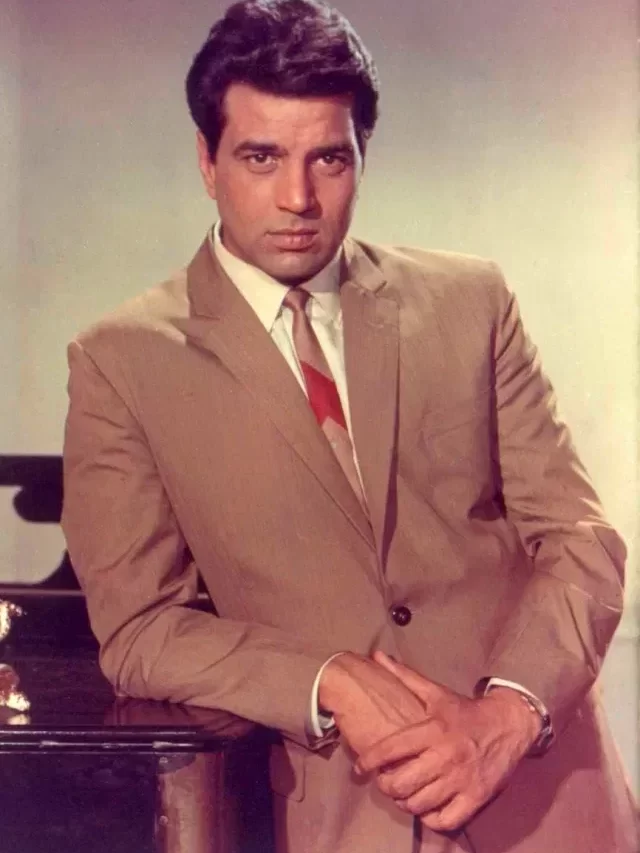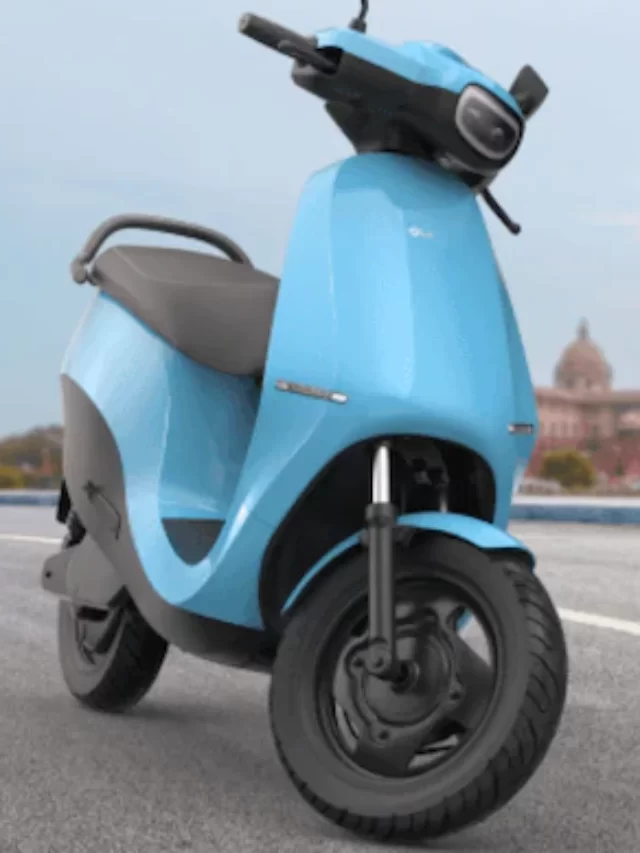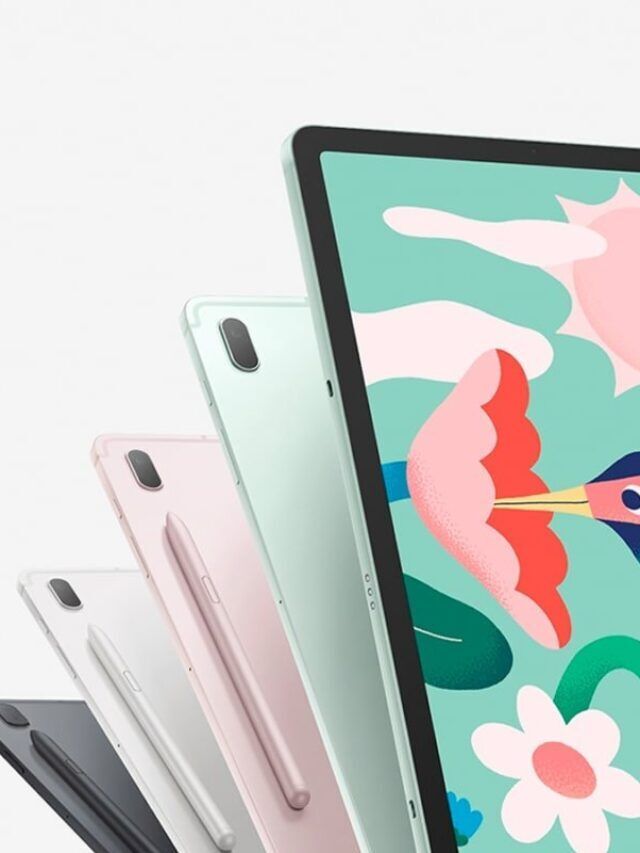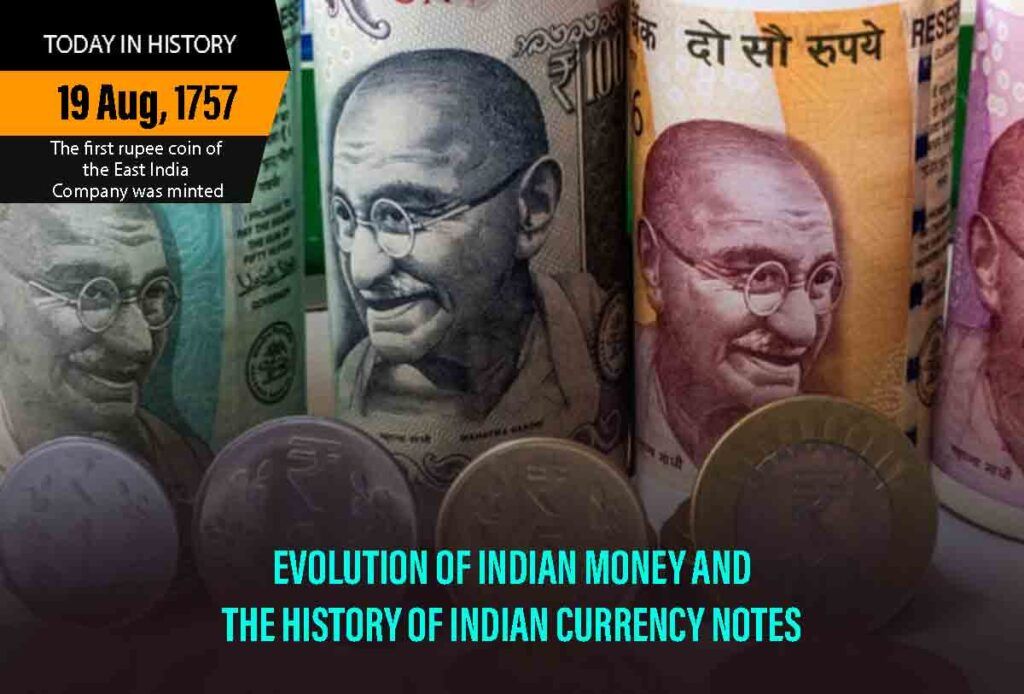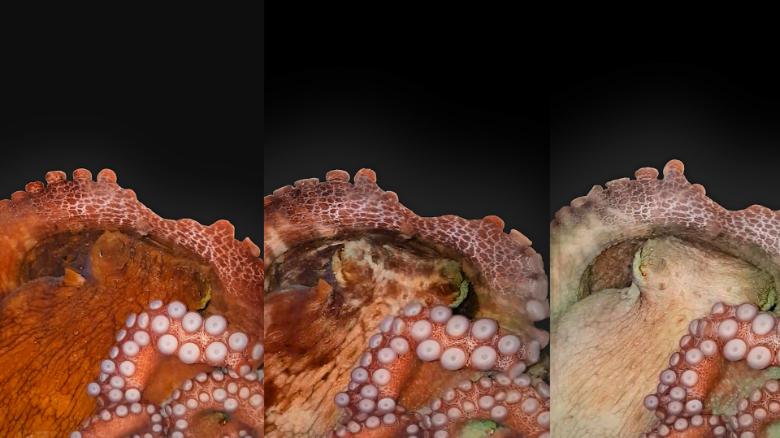The Indian currency that is circulated in the present day has a long history of itself. The newly issued 500₹ and 2000₹ notes that are in use today have a story of constant struggle. The evolution of Indian money from the ancient copper and silver coins to the modern paper-based notes spans centuries and tells us a fascinating story. This article will demystify the history of Indian currency and will also pay a small visit to the pages of history to get a glimpse of the evolution of Indian money. Read the article below to understand the glorious history of Indian currency notes.
The Evolution Of Indian Money – The Saga Of Indian Currency Notes
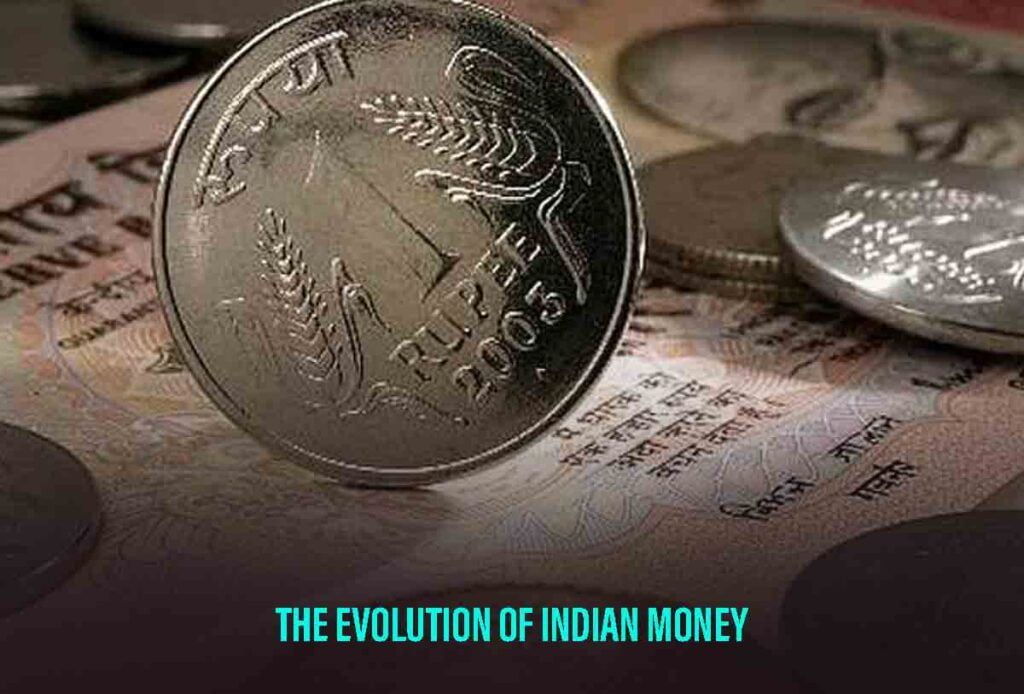
Ancient Indian Currency – The Ancient Indian Currency Coins
The ancient Indians, along with the Chinese and the Lydians from the Middle East have recorded their names as the first to issue coins in the world economy. But, do you know when we’re the first Indian coins issued and who were the issuers? How did they differ from the present-day Indian currency coins? To know more, let us take dig into the history of Indian currency.
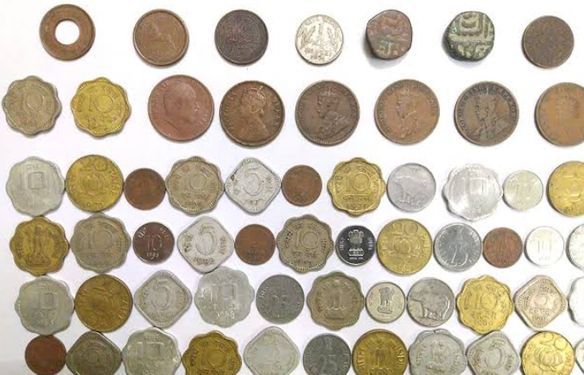
The first Indian coins were issued by the Mahajanapadas, in the 6th century BC, comprising, Gandhara, Kuntala, Kuru, Panchala, Shakya, Surasena and Saurashtras. These punch-marked coins were known by many names, such as Puranas, Karshapanas or Pana. Most importantly, they were carved in different shapes and sizes. While some had irregular shapes made of silver, others were engraved with pictures of humped bulls, like that of Saurashtra coins. Still, others like the Magadha dynasty and the Dakshin Panchala had different symbols in their currencies.
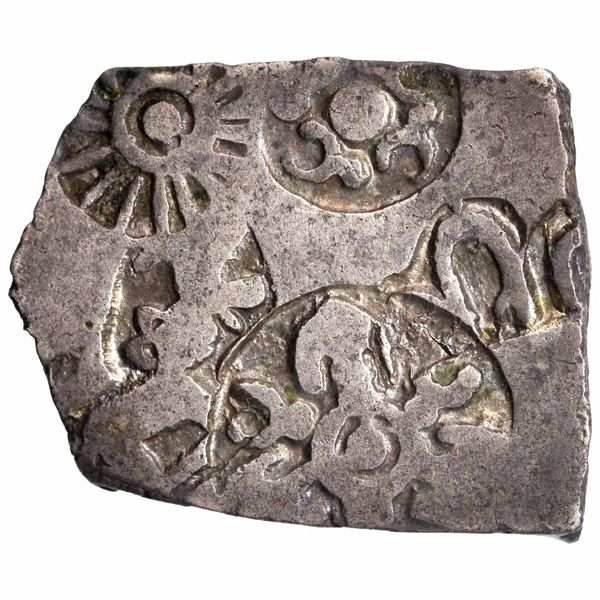
After the decline of the Magadha dynasty began, the Mauryas took over India. The rise of the Maurya rule in India altered the course of the history of Indian currency notes. They minted their coins in gold, silver, copper and even lead! Followed by the Mauryas, the Kushan Kings dominated Indian soil. The Indo-Greek emperor introduced the concept of engraving portrait heads on coins. Such coins had the engraved picture of the king on one side, and the other side was adorned with the King’s worshipped deity.
Soon, the establishment of the Gupta empire yet again fueled the evolution of Indian money to one step further. Their coins were made of gold and thus the Gupta period was also known to historians as the golden age. Their coins were intricately engraved and were one of the finest coins issued in ancient India in the history of Indian currency.

Meanwhile, the Turkish Kings were setting up their base on Indian soil which further aggravated the evolution of Indian money. They introduced their own system of Islamic calligraphy on the Indian coins. The coins of higher value were known as ‘tanka’ while the others were known as ‘jittals’. But, a turning point in the history of Indian currency materialized when Sher Shah Suri defeated Humayun! He issued a new currency coin known as rupiya, made of silver and weighing 178 grams. One rupiya consisted of 40 paise which continued till the end of the Mughal Dynasty.
The History Of Indian Currency Notes
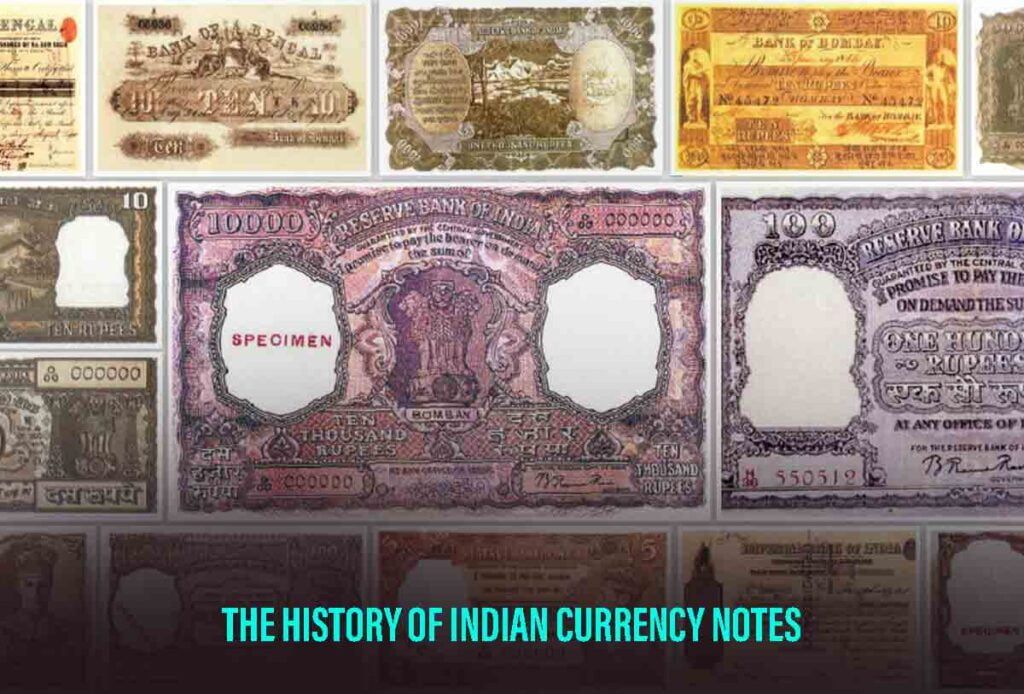
Pre Independence Indian Currency – First Currency Note In India
19th August 1757 – The first rupee coin of the East India Company was minted in Kolkata ( previously known as Calcutta). Do you know how this transition from the ancient Indian currency notes to the pre-Independence Indian currency transpired? To understand the events which led to the introduction of the first currency note in India, let us take a short glimpse into the pre-independence era and how the British contributed their fair share to the evolution of Indian money.
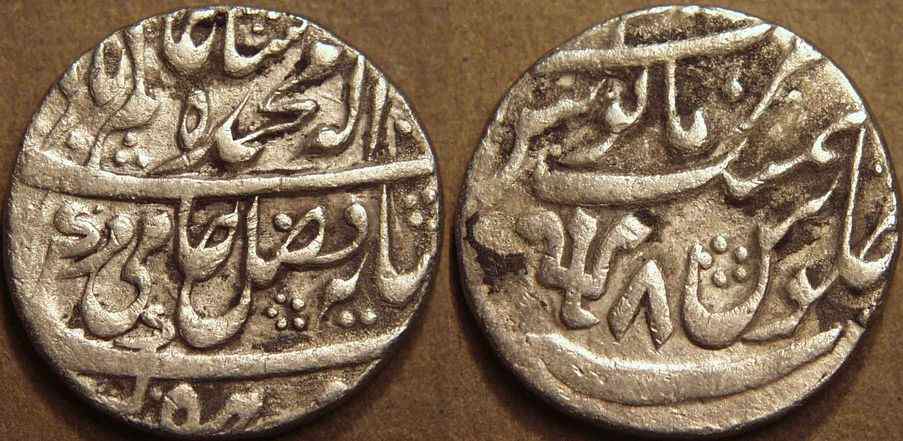
With the decline of the Mughal dynasty, the British East India Company expanded their base in India. But, they were not contented with their progress. So, they started interfering in the internal matters of India and soon they declared themselves as India’s colonial masters. This event had an important impact on the history of Indian currency notes too.
After gaining control of the Indian subcontinent, the currency notes of ancient India saw a huge transition. The introduction of the Coinage Act of 1835 granted sole power to the British to issue currency notes. Now, the coins depict the picture of the Monarch of Great Britain, replacing the Kings and deities of the ancient era. King George VI replaced the medieval rulers with the Indian currency. The 1857 Sepoy revolt introduced the rupee as the official currency note of British India.
Another series of progress was documented during World War 1. The transition from silver coins to paper currency notes was an outcome of the crisis faced during the war. Due to war havoc, coins made of silver proved to be tough to generate. Thus, the transition from silver coins to one rupee notes followed! Do you know when the first currency note in India started? Well, in 1935, after the establishment of the Reserve Bank of India, the Government of India was given the power to issue Indian currency notes.
The first currency note in India issued by RBI in 1938 was a five rupee note which had a picture of King George VI. Later, Rs.10,000 the largest denomination RBI ever issued in its history came into being. Soon, Rs. 2 and Re. 1 were also introduced into the Indian economy. But, we should not forget the historical event of 1928 – much before the RBI came into existence. The first currency printing press in Nashik was established and granted permission to print Indian currency notes.
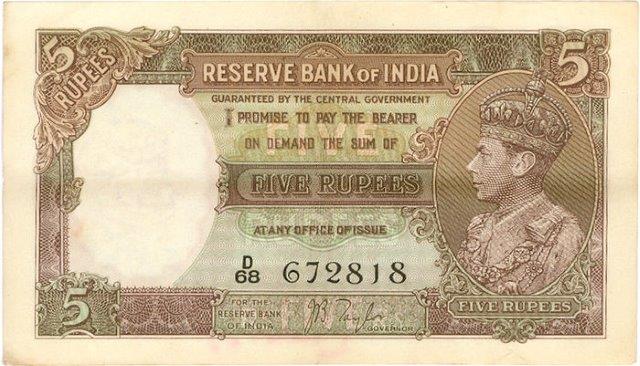
The question we often get asked is, what was the currency note of India before Independence? Well, the currency note of India was not one single currency, but multiple currencies. Apart from British King George VI currencies, earlier currencies included coins with the image of the British Queen. Other colonial government notes such as the French and the Portuguese currencies were also present in pre-independent India!
Post-Independence Indian Currency – The Mahatma Gandhi Series Banknotes
The notes which we use today feature the picture of the father of the Nation – Mahatma Gandhi. But, are you aware of the fact that this picture hides all the constant struggles of the past? Do you know that the saga of the evolution of Indian money has more to tell? Well, let us take a brief look into the post-independence Indian currency to know more about its evolution to the present times!
Soon after India became free from British influence, the history of Indian currency notes drastically changed in terms of their design. For the first few years, the rupee coin with the picture of king George VI was in circulation. But, after India became a Republic, the post-independence Indian currency consisted of a picture of the Lion capital of the Ashoka.

The first currency note in India after Independence was the one rupee note. But, when did Mahatma Gandhi first appear on the currency note of India? Let us take a look at the Mahatma Gandhi series banknotes. The first Mahatma Gandhi series banknotes came into India in 1996 when the RBI issued advanced paper currency notes for independent India. These notes now come with advanced security measures to avoid fake notes. They also have special features for specially-abled people.
The Current Indian Currency
The newest change in the Indian currency came with the demonetization of the old notes. Now, the new ₹500 notes consist of upgraded features, with an image of Red Fort in it. The new ₹2000 notes were also introduced into the Indian economy recently which hold a picture of the Mangalyaan. Hence, the first currency note in India was the rupee one.

Details Of Indian Currency Notes
Following are the details of the Mahatma Gandhi series banknotes:
1. 10 Rupees Note
Colour: Chocolate brown and beige
Release date: 5th January 2018
Size: 123mm X 63mm
Details:
Front side
- Picture of Mahatma Gandhi
- 10 written in Devanagari
Reverse side
- The Konark Sun Temple
- Swachh Bharat logo and slogan
- Language panel
2. 20 Rupees Note
Colour: Greenish-Yellow
Release date: 26th April 2019
Size: 129 mm × 63 mm
Details:
Front side
- Picture of Mahatma Gandhi
- 20 written in Devanagari
Reverse side
- The Ellora Caves
- Swachh Bharat logo and slogan
- Language panel
3. 50 Rupees Note
Colour: Aqua Blue
Release date: 10th November 2017
Size: 135mm X 66mm
Details:
Front side
- Image of Mahatma Gandhi
- 50 written in Devanagari
Reverse side
- Image of Hampi
- Swachh Bharat logo and slogan
- Language panel
4. 100 Rupees Note
Colour: Lavender and pink
Release date: 19th July 2018
Size: 142 mm × 66 mm
Details:
Front side
- Image of Mahatma Gandhi
- 100 written in Devanagari
Reverse side
- Rani ki vav
- Swachh Bharat logo and slogan
- Language panel
5. 200 Rupees Note
Colour: Bright yellow and orange
Release date: 25th August 2017
Size: 146mm X 66mm
Details:
Front side
- Image of Mahatma Gandhi
Reverse side
- Image of the Sanchi Stupa
- Language panel
- Swachh Bharat logo and slogan
6. 500 Rupees Note
Colour: Stone Gray
Release date: 10th November 2016
Size: 150mm X 66mm
Details:
Front side
- Image of Mahatma Gandhi
Reverse side
- Image of Red Fort
- Swachh Bharat logo and slogan
- Language Panel
7. 2000 Rupees Note
Colour: Magenta and baby pink
Release date: 8th November 2016
Size: 166mm X 66mm
Details:
Front side
- Image of Mahatma Gandhi
- 2000 written in Devanagari
- At 45 degree angle, one can see 2000 written in watermark
Reverse side
- Image of Mangalyaan
- Swachh Bharat logo and slogan
- Language panel
Also Read- Cryptocurrency: Knowledge & Strategies Of Crypto You Need To Know
Conclusion
With the introduction of digital India by PM Narendra Modi, online payment systems through NEFT, RTGS, EFT, Gpay and others are being manifested across India. While cryptocurrencies such as Bitcoin are gaining popularity throughout the world economy for their security measures, India might find itself in a hard position to accept them as the new digital currency for the Indian economy.
But, it is imperative to comment that the evolution of Indian money has come a long way from ancient currencies of silver and copper and it still has a long way to go!
For more related articles, visit Discover

